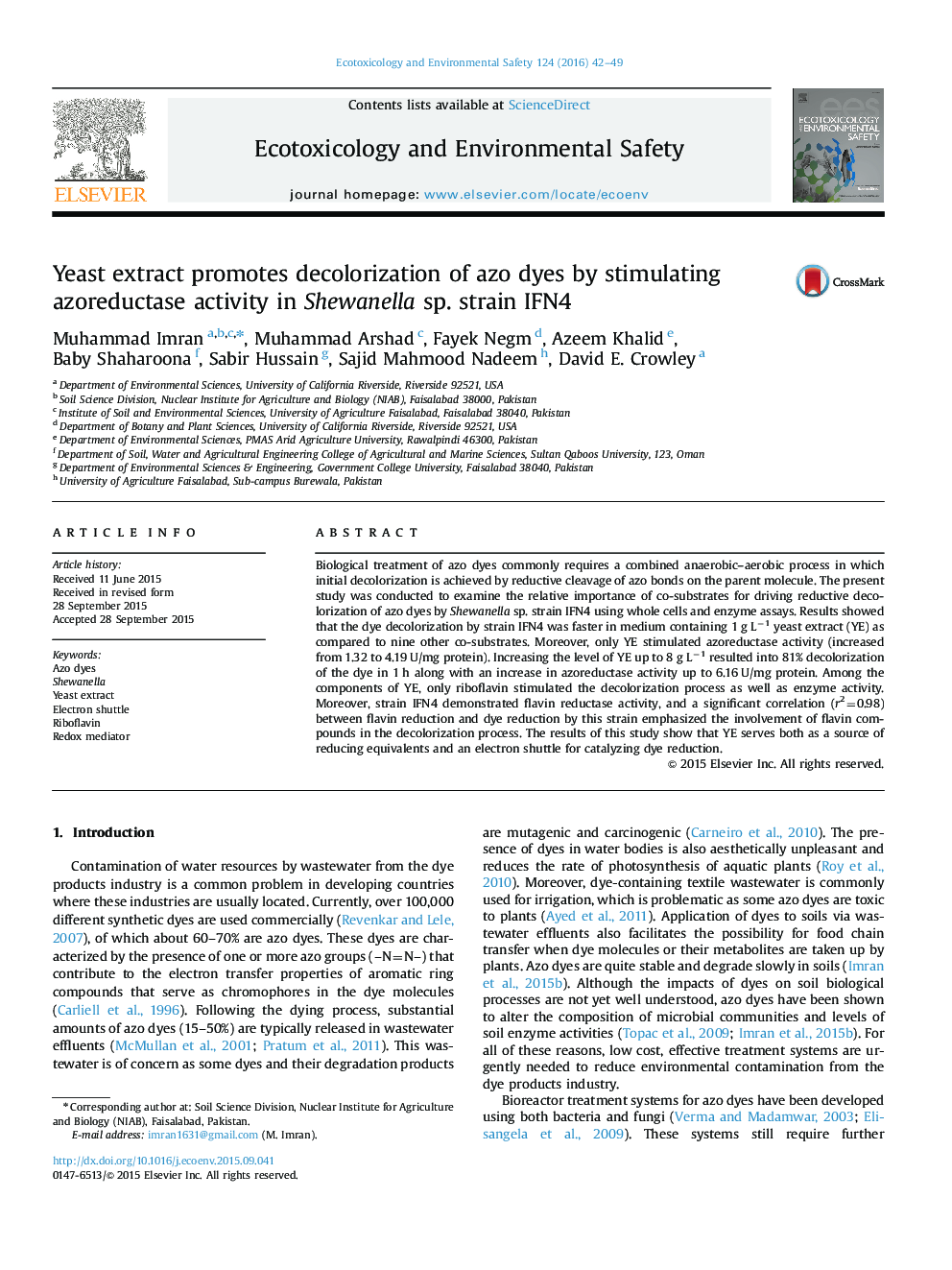| Article ID | Journal | Published Year | Pages | File Type |
|---|---|---|---|---|
| 6312026 | Ecotoxicology and Environmental Safety | 2016 | 8 Pages |
Abstract
Biological treatment of azo dyes commonly requires a combined anaerobic-aerobic process in which initial decolorization is achieved by reductive cleavage of azo bonds on the parent molecule. The present study was conducted to examine the relative importance of co-substrates for driving reductive decolorization of azo dyes by Shewanella sp. strain IFN4 using whole cells and enzyme assays. Results showed that the dye decolorization by strain IFN4 was faster in medium containing 1 g Lâ1 yeast extract (YE) as compared to nine other co-substrates. Moreover, only YE stimulated azoreductase activity (increased from 1.32 to 4.19 U/mg protein). Increasing the level of YE up to 8 g Lâ1 resulted into 81% decolorization of the dye in 1 h along with an increase in azoreductase activity up to 6.16 U/mg protein. Among the components of YE, only riboflavin stimulated the decolorization process as well as enzyme activity. Moreover, strain IFN4 demonstrated flavin reductase activity, and a significant correlation (r2=0.98) between flavin reduction and dye reduction by this strain emphasized the involvement of flavin compounds in the decolorization process. The results of this study show that YE serves both as a source of reducing equivalents and an electron shuttle for catalyzing dye reduction.
Related Topics
Life Sciences
Environmental Science
Environmental Chemistry
Authors
Muhammad Imran, Muhammad Arshad, Fayek Negm, Azeem Khalid, Baby Shaharoona, Sabir Hussain, Sajid Mahmood Nadeem, David E. Crowley,
